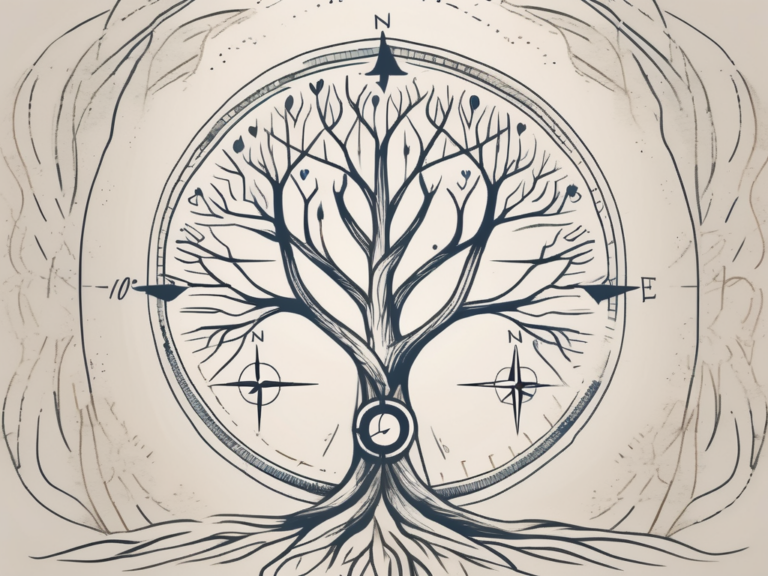The Ultimate Guide to Staying Fit in Old Age
In today’s fast-paced world, where we’re constantly bombarded with images of youthful vitality, it’s easy to overlook the importance of staying fit as we age. But the truth is, maintaining our physical and mental well-being becomes even more crucial as we enter our golden years. So, if you’re ready to embrace a healthier lifestyle and enjoy the benefits of staying fit in old age, you’ve come to the right place. In this ultimate guide, we’ll explore the connection between fitness and longevity, debunk common myths about aging and exercise, assess our current fitness level, create a balanced fitness routine, and much more. Let’s dive in!
Understanding the Importance of Fitness in Old Age
As we age, our bodies undergo various changes, both internally and externally. It’s these changes that make staying fit a necessity rather than a luxury. But why is fitness so important in old age? Well, the answer lies in the connection between fitness and longevity.
The Connection Between Fitness and Longevity
Did you know that staying fit can add years to your life? Numerous studies have shown a clear link between regular physical activity and increased lifespan. Engaging in exercise regularly helps improve cardiovascular health, strengthen muscles, boost immunity, and enhance mental well-being. It also plays a significant role in disease prevention and management, such as reducing the risk of heart disease, diabetes, and certain types of cancer.
Debunking Myths About Aging and Exercise
Before we continue, it’s crucial to address some common myths about aging and exercise. Many people believe that as we get older, exercise becomes too strenuous or even dangerous. However, the truth is quite the opposite. Of course, it’s essential to approach fitness in old age with caution and adapt workout routines to your capabilities. But staying physically active is not only safe but incredibly beneficial for overall health and well-being.
Moreover, staying active in old age can also help improve balance and flexibility, reducing the risk of falls and injuries. Incorporating activities like yoga or tai chi can enhance stability and coordination, promoting independence and quality of life. Additionally, regular exercise can aid in maintaining a healthy weight, which is crucial for reducing strain on joints and preventing obesity-related health issues.
The Social Aspect of Fitness in Old Age
Another essential aspect of fitness in old age is the social component. Joining group fitness classes or exercising with friends can provide a sense of community and motivation. Social interactions have been shown to have a positive impact on mental health, reducing feelings of loneliness and isolation commonly experienced by older adults. Building connections through physical activity can lead to lasting friendships and a support system that encourages consistency in maintaining an active lifestyle.
Assessing Your Current Fitness Level
Before diving into any fitness routine, it’s vital to assess your current fitness level. This will help you set realistic goals and create a personalized exercise plan that suits your needs and abilities.
Understanding where you stand in terms of fitness is like creating a roadmap for your journey to a healthier lifestyle. By taking the time to evaluate your strengths and weaknesses, you can tailor your workouts to maximize your potential and work on areas that need improvement.
Recognizing Your Strengths and Weaknesses
Take some time to reflect on your strengths and weaknesses when it comes to physical activity. Are you naturally flexible? Do you have good balance? Are there any specific areas of your body that need improvement? Understanding these factors will guide you in selecting the right exercises and create a workout routine that addresses your unique requirements.
For instance, if you excel in cardiovascular activities but struggle with strength training, you can focus on incorporating more resistance exercises into your regimen. By acknowledging these aspects, you can create a well-rounded fitness plan that caters to your individual needs.
Setting Realistic Fitness Goals
Once you’ve assessed your fitness level, it’s time to set realistic goals. Keep in mind that these goals should be specific, measurable, achievable, relevant, and time-bound (SMART). For example, if you’re currently sedentary, an initial goal could be to walk for 30 minutes three times a week. As you progress, you can gradually increase the intensity and duration of your workouts.
Setting achievable goals is essential for staying motivated and tracking your progress. Whether you aim to improve your endurance, build muscle strength, or enhance flexibility, establishing clear objectives will keep you focused and committed to your fitness journey.
Creating a Balanced Fitness Routine
Now that you have a clear understanding of your fitness level and goals, it’s time to create a balanced fitness routine that incorporates various types of exercise to target different areas of your physical well-being.
But before we dive into the specifics, let’s take a moment to appreciate the importance of a balanced fitness routine. It’s like a symphony, with each exercise playing its own unique role to create a harmonious melody of health and vitality. Just as a conductor carefully selects the right combination of instruments to create a masterpiece, you too must carefully choose the exercises that will contribute to your overall well-being.
Incorporating Cardiovascular Exercise
Cardiovascular exercise, also known as aerobic exercise, is essential for maintaining a healthy heart, increasing endurance, and improving overall cardiovascular health. It’s like a rhythmic dance that gets your heart pumping and your blood flowing, bringing life and vitality to every cell in your body.
Activities such as brisk walking, cycling, swimming, and dancing are excellent choices for older adults. They not only provide a great cardiovascular workout but also bring joy and a sense of freedom as you move your body in sync with the rhythm of life. Aim for at least 150 minutes of moderate-intensity aerobic exercise per week, and don’t forget to warm up and cool down properly before and after each session.
The Role of Strength Training
Strength training is another crucial component of a balanced fitness routine, especially in old age. It’s like building a strong foundation for a house, providing stability and support for everything else you do. Regular strength training exercises help prevent age-related muscle loss, improve bone density, and enhance overall strength and stability.
Focus on exercises that target major muscle groups, such as squats, lunges, bicep curls, and chest presses. These exercises not only sculpt and tone your body but also build resilience and confidence from within. Start with light weights or resistance bands and gradually increase the intensity as your strength improves. Remember, Rome wasn’t built in a day, and neither will your strength. Patience and consistency are key.
Flexibility and Balance Exercises
As we age, maintaining flexibility and balance becomes increasingly important to prevent falls and injuries. It’s like oiling the gears of a well-oiled machine, ensuring smooth movement and preventing any creaks or hiccups along the way. Incorporate stretching exercises into your routine to enhance flexibility and improve joint mobility.
Additionally, consider adding balance exercises, such as yoga or tai chi, to improve stability and coordination. These activities not only challenge your body but also calm the mind and promote relaxation. It’s like finding your center amidst the chaos of life, allowing you to navigate through any storm with grace and poise.
So there you have it, a balanced fitness routine that encompasses cardiovascular exercise, strength training, flexibility, and balance exercises. Remember, this is just the beginning of your fitness journey. Embrace the process, listen to your body, and enjoy the beautiful symphony of health and well-being that you are creating.
Nutrition for Fitness in Old Age
Achieving fitness in old age isn’t just about exercise; proper nutrition plays a vital role in maintaining overall health and well-being. Here are a few essential nutrients for the elderly:
Essential Nutrients for the Elderly
As we age, our bodies require specific nutrients to support optimal functioning. Focus on consuming a balanced diet that includes lean protein sources, whole grains, fruits, vegetables, healthy fats, and low-fat dairy products. Adequate intake of vitamins and minerals such as calcium, vitamin D, vitamin B12, and omega-3 fatty acids is also crucial for maintaining bone health, immune function, and overall vitality.
Furthermore, fiber is an essential nutrient for the elderly as it aids in digestion and helps prevent constipation, a common issue among older adults. Foods rich in fiber include whole grains, fruits, vegetables, nuts, and seeds. Incorporating these into your diet can promote gut health and regular bowel movements, contributing to overall well-being.
Hydration and Its Importance
Staying hydrated is equally important for fitness in old age. As we age, our bodies may not signal thirst as effectively. Therefore, make it a habit to drink water regularly throughout the day. Aim for at least eight cups of water daily and limit the consumption of sugary drinks or excessive caffeine, as they can lead to dehydration.
In addition to water, herbal teas and infused water can be refreshing alternatives to plain water and can contribute to your daily fluid intake. Herbal teas like chamomile or peppermint not only hydrate but also offer potential health benefits such as relaxation and digestion support. Experiment with different flavors to find what you enjoy most while staying adequately hydrated.
Overcoming Common Fitness Challenges in Old Age
Embarking on a fitness journey in old age may pose certain challenges. However, with the right mindset and strategies, you can overcome these obstacles and achieve your fitness goals. Here are a few common challenges and how to tackle them:
Dealing with Mobility Issues
If you’re dealing with mobility issues, don’t let that discourage you. There are plenty of exercises and modifications that can accommodate your needs. Consult with a fitness professional or physical therapist who can guide you in selecting exercises that improve strength, flexibility, and range of motion without exacerbating any existing conditions.
Additionally, incorporating activities like water aerobics or tai chi can be beneficial for improving balance and coordination while being gentle on the joints. These low-impact exercises can help enhance mobility and reduce the risk of falls, which is crucial for older adults.
Managing Chronic Conditions
Living with chronic conditions such as arthritis, diabetes, or heart disease doesn’t mean you have to avoid exercise altogether. In fact, staying fit can help manage these conditions and improve your overall quality of life. It’s essential to work closely with your healthcare provider to develop an exercise plan that takes your specific condition into account. They can provide guidance on exercises that are safe and effective for your situation.
In addition to structured exercise routines, incorporating daily activities like gardening, walking, or dancing can also contribute to your overall fitness level. These activities not only help in managing chronic conditions but also provide enjoyment and social interaction, which are important aspects of overall well-being in old age.
Mental Health and Fitness
Beyond the physical benefits, staying fit in old age also has a profound impact on mental well-being. Regular exercise has been shown to boost mood, reduce anxiety and depression, improve cognitive function, and enhance overall mental health.
When it comes to mental health and fitness, the benefits extend far beyond just the physical realm. Engaging in regular exercise not only strengthens the body but also nurtures the mind. The positive effects of exercise on mental well-being are well-documented and multifaceted, encompassing everything from improved mood to enhanced cognitive abilities.
The Impact of Exercise on Mental Well-being
Exercise releases endorphins, also known as “feel-good” hormones, which promote a sense of happiness and well-being. Engaging in physical activity can also provide a sense of accomplishment, boost self-confidence, and help alleviate stress. Additionally, participating in exercise classes or group activities offers an opportunity for social interaction, which plays a crucial role in maintaining mental health.
Moreover, the benefits of exercise on mental well-being go beyond just the immediate effects. Regular physical activity has been linked to a reduced risk of developing mental health disorders such as depression and anxiety. The long-term impact of exercise on the brain is profound, with studies showing that it can help protect against cognitive decline and improve overall brain health.
Staying Motivated for Regular Exercise
Despite the numerous benefits, finding motivation for regular exercise can be challenging at times. Here are a few strategies to stay on track:
- Set realistic and achievable goals that align with your interests and abilities.
- Find activities you truly enjoy. It’s easier to stay committed when you look forward to your workouts.
- Get an exercise buddy or join a fitness group. Having support and accountability can make a significant difference.
- Track your progress. Keep a journal or use fitness apps to monitor your achievements. Seeing the improvements over time can provide motivation to keep going.
Remember, the journey to better mental and physical health is a marathon, not a sprint. By incorporating exercise into your daily routine and staying committed to your goals, you are not just improving your physical fitness but also nurturing your mental well-being for years to come.
Safety Tips for Exercising in Old Age
When it comes to staying fit in old age, safety should always be a top priority. Here are a few essential tips to prevent injuries during your workouts:
As we age, our bodies may not be as resilient as they once were, making it crucial to pay attention to warning signs such as persistent pain or discomfort during exercise. Consulting with a healthcare provider before starting a new exercise regimen is advisable, especially if you have any pre-existing health conditions or concerns.
Preventing Injuries During Workouts
Always start with a warm-up to increase blood flow and prepare your muscles for exercise. When performing strength training exercises, use proper form and technique to avoid strain or injury. Don’t forget to cool down and stretch after each workout session, as this helps prevent muscle soreness and promotes flexibility.
Additionally, incorporating a variety of exercises into your routine can help prevent overuse injuries and keep your workouts engaging. Mixing in activities like swimming, yoga, or tai chi can provide a well-rounded approach to fitness while reducing the risk of repetitive strain injuries.
Knowing When to Rest and Recover
Rest and recovery are just as important as exercise itself. Listen to your body and give yourself ample time to recuperate between workouts. Overtraining can lead to fatigue, decreased performance, and increased risk of injury. Incorporate rest days into your routine and prioritize sleep to allow your body to recharge and repair itself.
Furthermore, staying hydrated and maintaining a balanced diet rich in nutrients can support your body’s recovery process and overall well-being. Adequate hydration is essential for joint lubrication and temperature regulation during exercise, while a diet high in protein, healthy fats, and vitamins can aid in muscle repair and growth.
The Role of Regular Check-ups in Fitness
Lastly, regular check-ups with your healthcare provider are crucial for staying fit in old age. These check-ups help monitor your overall health, address any concerns, and ensure that your exercise routine is appropriate for your specific needs and capabilities.
Importance of Regular Health Screenings
Regular health screenings can detect and address any underlying health conditions or risk factors that may impact your fitness journey. Depending on your age and medical history, your healthcare provider may recommend screenings for cholesterol, blood pressure, bone density, and other relevant assessments.
Communicating with Your Doctor About Your Fitness Routine
Keep an open line of communication with your doctor about your fitness routine. Inform them about any new activities or changes in your exercise plan. They can provide guidance on adjustments or modifications to ensure your safety and optimize your fitness journey.
In conclusion, staying fit in old age is not only achievable but also essential for a vibrant and fulfilling life. By understanding the importance of fitness, assessing our current fitness level, creating a balanced workout routine, paying attention to nutrition, overcoming challenges, prioritizing mental well-being, following safety tips, and seeking regular check-ups, we can set ourselves up for healthy aging. Remember, it’s never too late to start. So, embrace the power of fitness and enjoy the journey to a healthier and happier you!






